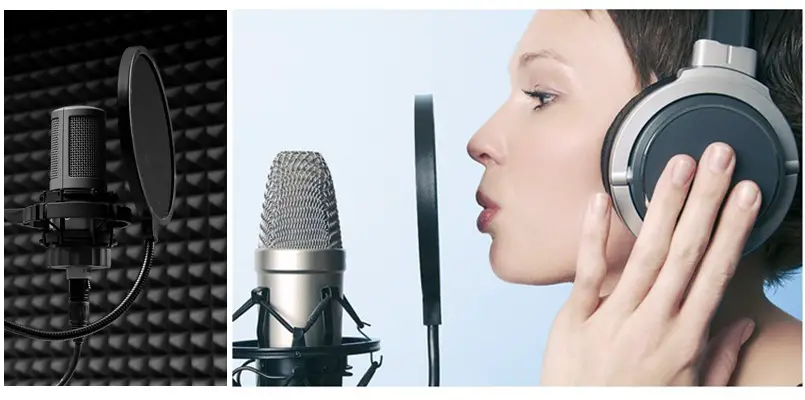
Useful tips and techniques to record vocals and guitar.
Recording Vocals
Most people get started with music production by using software such as Reason, FL-Studio, which are great for making dance tracks.
Using such software, you can easily lay down the drums & bass tracks, add a few more instrumental tracks, and quickly you’ll have your song created.
But when you actually have to record live guitars and vocals, its a slightly different ball game. It’s not difficult, its just that you need to get used to it.
Whether you’re recording at home or recording in a studio, the basics are the same.
When recording vocal in a large space, sometimes you will get unwanted ambiance surround sound, so to control these you need to setup acoustic panels. At home, you could just use a mic stand and a blanket.
Consonants like ‘p’s and ‘b’s can be problematic while recording vocals, they move a lot of air and can cause a lot of pops in your recording. To reduce the unwanted air, you can setup a pop-filter about 1-2 inches away from the mic.
Proximity Effect
The other thing that you will have to deal with when recording vocals is the proximity effect.
The closer the vocalist gets to the microphone, the more is the wind that the mic is going to capture. Most vocalists/singers stand about a feet or so way from the microphone when singing (you can always test it out to see what sounds best).
Most singers want to hear themselves loud and clear, so make sure you provide them a good pair of headphones when recording the vocals.
If any track is interfering with their vocals, mute that track temporarily so that the vocalist can focus on singing. You can put it back later.
These are just some of the basics of recording vocals, but the more important thing is to spend more time with the vocalist, selecting the right microphone and to set it up in a way that best suits the vocal artist.
Recording Guitar
There are many who treat their guitar leads just like a lead vocal. It has to stand apart from the other guitars, like a lead vocal stands apart from the other vocal parts.
Usually, lead guitar should have it’s own voice and space.
Whenever you record lead guitar, try using a different microphone (if you can) than what you used for recording the rhythm part.
For rhythm you could use a closely placed Shure SM57; For leads, you may use a condenser mic, and place it about three feet away from the amp.
However, if you don’t have a condenser, or if you only have one mic that’s okay too.
Moving a microphone even an inch from side to side, or back to front will change the sound drastically.
Try different mics (if you have them), and experiment with different mic placements. This will give you so much more to work with during the final mixdown.



Leave a Reply